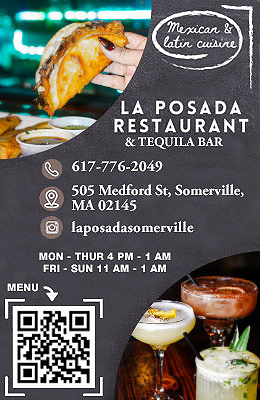The immigrant experience has deep roots in Somerville neighborhoods and although city  immigrants are diverse and may be separated by language, ethnicity and age, their common experiences have the power to connect, according to a new exhibit at The Somerville Museum.
immigrants are diverse and may be separated by language, ethnicity and age, their common experiences have the power to connect, according to a new exhibit at The Somerville Museum.
“Somerville: Immigrant City” pairs the words and images of Somerville residents to express the fear, excitement and anxiety of coming to the city from Ireland, Italy, Greece, Haiti, Brazil and El Salvador. And despite differences in culture and generations, the emotions European immigrants of the early twentieth century felt in coming to a new country and city are similar to what today’s Salvadoran and Haitian immigrants experience, said Aru Manrique, the city’s director of multicultural affairs.
“The details of the story —- the setting, the time, the place —- may be different, but all immigrants experience basically the same emotions and feelings and have similar stories about coming to America,” he said.
The exhibit is a collaborative effort between the Welcome Project, the Somerville Museum and city youth. Welcome Project Executive Director Warren Goldstein Gelb said Cummings School eighth graders, Somerville High School history students and children from the Mystic Avenue Housing Development conducted interviews with immigrants and children of immigrants in the city and took photos of immigrant life in Somerville. The combined works make up “Immigrant City,” he said.
 One of the Somerville residents featured in the exhibit is Mayor Joseph A. Curtatone, the first generation son of Italian immigrants who learned to speak English at age four from his six-year-old sister. Curtatone said speaking with young immigrants for the project “hit a personal spot in my heart.”
One of the Somerville residents featured in the exhibit is Mayor Joseph A. Curtatone, the first generation son of Italian immigrants who learned to speak English at age four from his six-year-old sister. Curtatone said speaking with young immigrants for the project “hit a personal spot in my heart.”
“It was one of the most powerful interviews and conversations I have ever had,” he said.
“To see the mayor connect with high school aged immigrants and children of immigrants was a powerful thing. For them to meet with the mayor of their city and have him be sympathetic and interested in their experience I think moved everybody involved,” Goldstein-Gelb said.
According to the exhibit, Somerville has always been a city where new arrivals made a home and a better life for themselves while enriching the city. Some of the first newcomers to arrive in Somerville in large numbers from foreign lands were Irish, Greek and Italian immigrants from the 1920s through the 1940s, said Alex Pirie who helped organize the exhibit. In the 1980s Central American and Haitian immigrants began to arrive in the city fleeing the violent political upheaval of their homelands, he said. The newcomers have faced different battles over the years —- Manrique said today’s immigrants face more anti-immigrant sentiment and deal with more fear and uncertainty over their documentation status than their predecessors —- but according to Pirie, the museum exhibit is a good reminder of how both groups have battled racism and ignorance while carving out a new home for themselves.
“This exhibit will remind people who are themselves children or grandchildren of non-English speaking immigrants about the history of support we have offered newcomers in this city and that Somerville has always been a welcoming place for immigrants who want to work hard and raise a family,” he said.
speaking immigrants about the history of support we have offered newcomers in this city and that Somerville has always been a welcoming place for immigrants who want to work hard and raise a family,” he said.
Ward 5 School Committee member Mark Niedergang said the city’s alternate acceptance and rejection of newcomers moves in cycles and that today’s national climate towards immigration has influenced some city residents.
“Today’s attitudes towards immigrants in Somerville are more hostile than a few years ago but better than 20 years ago,” he said. “The national climate hurts but also locally when [Alderman-at-Large] Jack Connolly used immigration as a political issue it hurt the community by portraying immigrants as a threat.”
The city’s immigrant community was shaken in August when federal immigration agents swooped into the city to arrest alleged gang members. Immigration rights advocates said the raids were aggressive and spread fear through the community, even for legal immigrants. One of the people featured in the museum’s exhibit, Javier X, said fear of deportation is part of modern immigrant life.
“Being an immigrant is like being a ghost because you are invisible to those around you. It is hard because you have no voice and you are afraid to be deported leaving all your dreams behind. The worst thing is that you are always alert and afraid,” he said.
 However intolerant the national climate on immigration may be, Curtatone said Somerville sees its newcomers as a strength.
However intolerant the national climate on immigration may be, Curtatone said Somerville sees its newcomers as a strength.
“I love the fact that we speak over 50 languages from over 20 countries, I think that is part of something special here. I love that you can go to a different neighborhood or square and you can get a different feel or another taste or flavor from another part of the world. That is something special we have here. Its always been that way, its just gotten bigger and bigger,” he said.
Regina Bertholdo, who came to Somerville from Brazil in 1992, said she sees the city the same way previous immigrants have. “This is my home,” she said.















Reader Comments